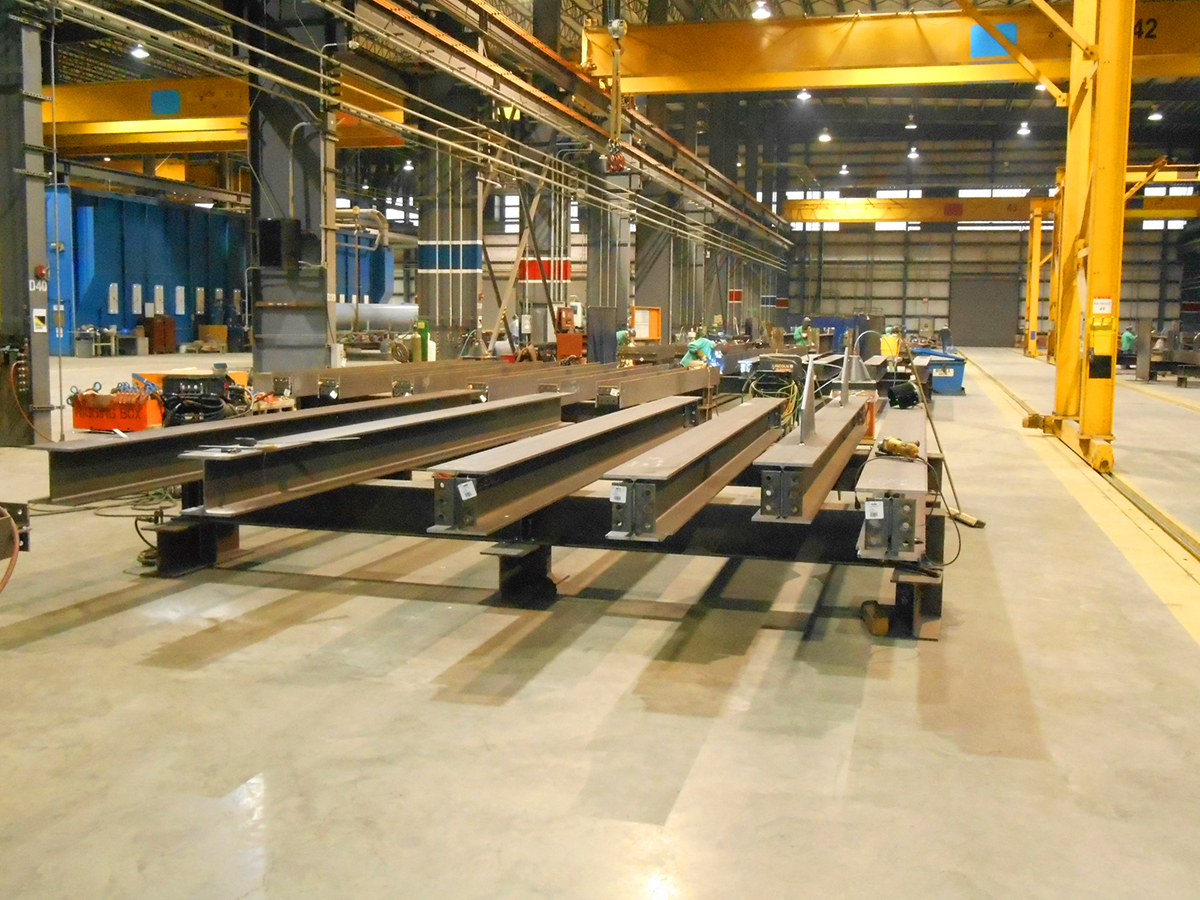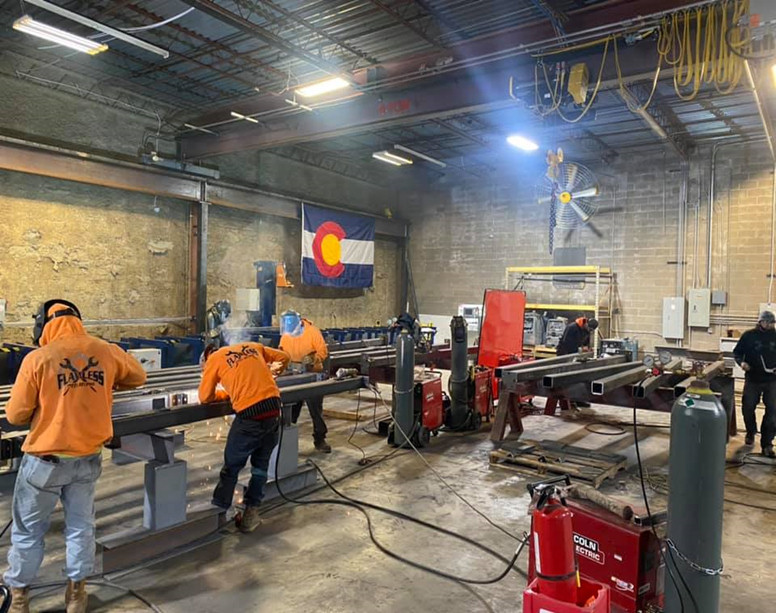Alpha Reo: Leading the Way in Reinforced Steel Solutions
Alpha Reo: Leading the Way in Reinforced Steel Solutions
Blog Article
Ingenious Trends in Steel Manufacture: Enhancing Resilience and Accuracy
In the world of steel manufacture, the pursuit of durability and accuracy has led to a wave of cutting-edge patterns that are improving the industry. These fads are not just shaping the present yet additionally laying the foundation for the future of steel fabrication, promising additional improvements in longevity and accuracy.
Advanced Welding Technologies
In the realm of steel manufacture, the fostering of advanced welding innovations has significantly transformed the industry's approach to accomplishing premium quality and accuracy in structural welds. Advanced welding innovations, such as laser beam of light welding and friction mix welding, have emerged as game-changers in the area. By leveraging these innovative welding methods, steel fabricators can boost the durability, strength, and precision of their architectural welds, satisfying the increasingly requiring requirements of modern construction projects.
Robotic Automation in Fabrication
Embracing robotic automation has ended up being a foundation of contemporary steel fabrication practices, streamlining procedures and enhancing effectiveness across the market. Robotics are transforming the way steel elements are produced, providing unrivaled accuracy and rate while reducing human error. These automated systems can handle repetitive tasks with regular precision, resulting in better output.
One trick advantage of robot automation in steel fabrication is the capacity to work all the time without fatigue, substantially enhancing manufacturing result. This continual operation decreases downtime and accelerates project timelines, inevitably saving expenses for producers. Furthermore, robots can be configured to do complex tasks that may be dangerous or difficult for human workers, improving safety and security in the office.
In addition, robotic automation makes it possible for seamless integration with other electronic innovations, such as computer-aided style (CAD) software program and Internet of Points (IoT) systems (steel fabricators melbourne). This interconnected method boosts communication in between various phases of construction, maximizing workflows and making certain real-time monitoring and control. As the steel manufacture sector remains to progress, robotic automation stands apart as a transformative force driving effectiveness and precision in manufacturing procedures

High-Strength Alloy Growth
The advancement of high-strength alloy growth in steel fabrication is improving the sector's approach to improving product durability and efficiency. High-strength alloys are engineered to show exceptional mechanical residential properties, such as enhanced tensile toughness, strength, and corrosion resistance contrasted to standard steel grades. By including these sophisticated alloys into fabrication procedures, manufacturers can create elements that withstand higher tension levels and extreme settings, causing more trustworthy and long lasting final result.
One key benefit of high-strength alloy development is the capability to minimize material thickness without jeopardizing architectural integrity. This not only results in lighter-weight parts but additionally adds to cost savings and boosted effectiveness in try this web-site construction and assembly procedures. Additionally, the boosted strength-to-weight ratio of these alloys permits the layout and building of frameworks with higher load-bearing capabilities while decreasing overall weight.
3D Modeling and Simulation Software Application
Improvements in steel manufacture procedures have actually been substantially pushed by the integration of sophisticated 3D modeling and simulation software program devices. These tools allow makers to develop detailed digital designs of their tasks, allowing them to envision the end product with accuracy prior to any physical job begins. By mimicing different stress and anxiety elements, environmental problems, and architectural lots, fabricators can maximize styles for boosted resilience and performance. Furthermore, 3D modeling and simulation software simplify the manufacturing process by recognizing prospective concerns early on, minimizing the requirement for pricey rework and decreasing material waste.

Lasting Practices in Steel Manufacturing
Including lasting techniques into steel manufacturing processes is vital for reducing ecological impact and making certain lasting resource availability. One vital lasting technique is the adoption of energy-efficient modern technologies to lower greenhouse gas exhausts during the steel manufacturing procedure. This includes making use of renewable resource sources, such as solar or wind power, to power steel plants and implementing energy-efficient devices to maximize power use.
An additional vital element of lasting steel manufacturing is the responsible sourcing of resources. This entails ensuring that the iron ore and other resources utilized in steelmaking are obtained from ethical and eco-friendly resources. By advertising transparency in the supply chain and sticking to rigorous environmental requirements, steel manufacturers can lessen the negative influences of source extraction on local ecosystems and communities.

Conclusion
To conclude, the innovative patterns in steel manufacture such as advanced welding innovations, robot automation, high-strength alloy development, 3D modeling and simulation software, and lasting methods are enhancing the durability and precision of steel items. These advancements are reinventing the steel construction sector by enhancing top quality, sustainability, and effectiveness. It is clear that the future of steel fabrication depends on embracing these cutting-edge go to these guys innovations to fulfill the needs of modern-day building and manufacturing industries.
In the world of steel fabrication, the quest of toughness and accuracy has led to a wave of ingenious patterns that are improving the industry.In the realm of steel manufacture, the adoption of advanced welding modern technologies has significantly reinvented the sector's approach to attaining superior top quality and precision in structural welds. As the steel construction industry continues to progress, robotic automation stands out as a transformative pressure driving efficiency and precision in manufacturing procedures.
In addition, recycling and reusing steel scrap and waste products play a considerable duty in improving the sustainability of steel production. Alpha reo.In final thought, the innovative fads in steel manufacture such as sophisticated welding modern technologies, robot automation, high-strength alloy advancement, 3D modeling and simulation software, and lasting techniques are improving the sturdiness and accuracy of steel products
Report this page